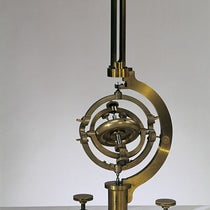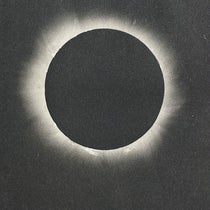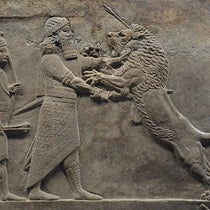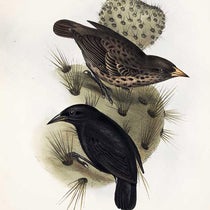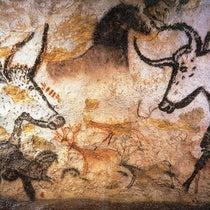Scientist of the Day - William Saville-Kent
William Saville-Kent, an English marine biologist, was born July 10, 1845. His early interest was in protozoa, or "infusoria," as these organisms were called in the 19th century. This interest was probably a result of his studying for some years with Thomas H. Huxley, who had a similar passion for tiny marine organisms. By 1880, Saville-Kent was expert enough to publish the first volume of an important study, A Manual of the Infusoria (the complete three-volume work is in our History of Science Collection). While working on this book, Saville-Kent held a series of positions with various aquaria in England, and he helped set up some of England’s first fisheries. His hard-won expertise in managing sea life in aquaria, his book on infusoria, and a recommendation by Huxley, secured for him the position of Inspector of Fisheries in Tasmania in 1884, which introduced him to the Land Down Under, where he would spend much of the rest of his life.
Saville-Kent's income came from fisheries management for various Australian states, but he continued with his studies of marine life, paying special attention to Australia’s unique marine habitat, the Great Barrier Reef. In 1893, he published a large tome with the results of his studies, called, appropriately, The Great Barrier Reef. It is one of the great illustrated books in all the natural sciences. Others had transplanted anemones, for example, to aquaria, and published beautiful books about them, as had Philip Henry Gosse in 1859. But Saville-Kent observed marine organisms, and drew them, in their natural habitat. Moreover, he brought photography to bear on marine biology, photographing corals and tidal pools with a portable camera set-up. Forty-eight of the plates in the book are plates of photographs. And then, at the end, there are 16 chromolithographs, which is to say, plates printed in color, that show a variety of marine life, mostly corals, as drawn by Saville-Kent. Spectacular is just about the only word suitable for describing them.
I had been looking forward to writing about our copy of this book for 9 months, ever since I was introduced to the book by a former fellow at the Library, Emily Hutcheson. So it is disappointing to reach Saville-Kent's birthday and be unable to show you any of the beautiful plates in our copy, since the Library has restricted scanning operations during the pandemic. Fortunately, all of the color plates, and nearly all of the photographic plates, are available in high resolution scans on Wikimedia commons and on several other sites, so we can show you images, it's just that they are not ours. That said, they are almost as impressive when borrowed from someone else's copy.
From the chromolithographs, I chose one depicting Barrier Reef corals for our opening image, and we provide links to three others: sea cucumbers (beche-de-mer to the French), echinoderms, and barrier reef fish, which in this case are mostly parrotfish. Click any of these images to enlarge.
The plates reproducing photographs are not so arresting to the eye, as for example this one showing a variety of bleached corals. But to the expert, they are just as important, since they mark the beginning of the historical record about the corals of the Great Barrier Reef, which are today seriously threatened. The most interesting photographs for us are the ones that show Saville-Kent in action with his camera. The upper half of this plate shows Saville-Kent photographing a tidal pool; the lower half we have included here as our second image, showing our intrepid marine biologist with his set-up for photographing sea cucumbers in tubs of water. The credits say that Saville-Kent took this picture, so we have here a photograph by Saville-Kent depicting Saville-Kent taking another photograph.
Saville-Kent published one other important book, The Naturalist in Australia (1897), which has 60 plates and 9 chromolithographs. We have this book in our collection as well, but we will have to save a discussion of the book for a later time.
Did we mention that Saville-Kent successfully planted an irritant seed in a pearl oyster and grew the first spherical artificial pearl ever? And that he was the one who discovered that the frilled lizard of Australia is actually bipedal, running on its hind feet? This was a man of many interests and talents. It will be fun to come back to him in a few years.
We leave you with a formal photographic portrait of William Saville-Kent, which appears as the frontispiece to his Naturalist in Australia.
Dr. William B. Ashworth, Jr., Consultant for the History of Science, Linda Hall Library and Associate Professor emeritus, Department of History, University of Missouri-Kansas City. Comments or corrections are welcome; please direct to ashworthw@umkc.edu.



